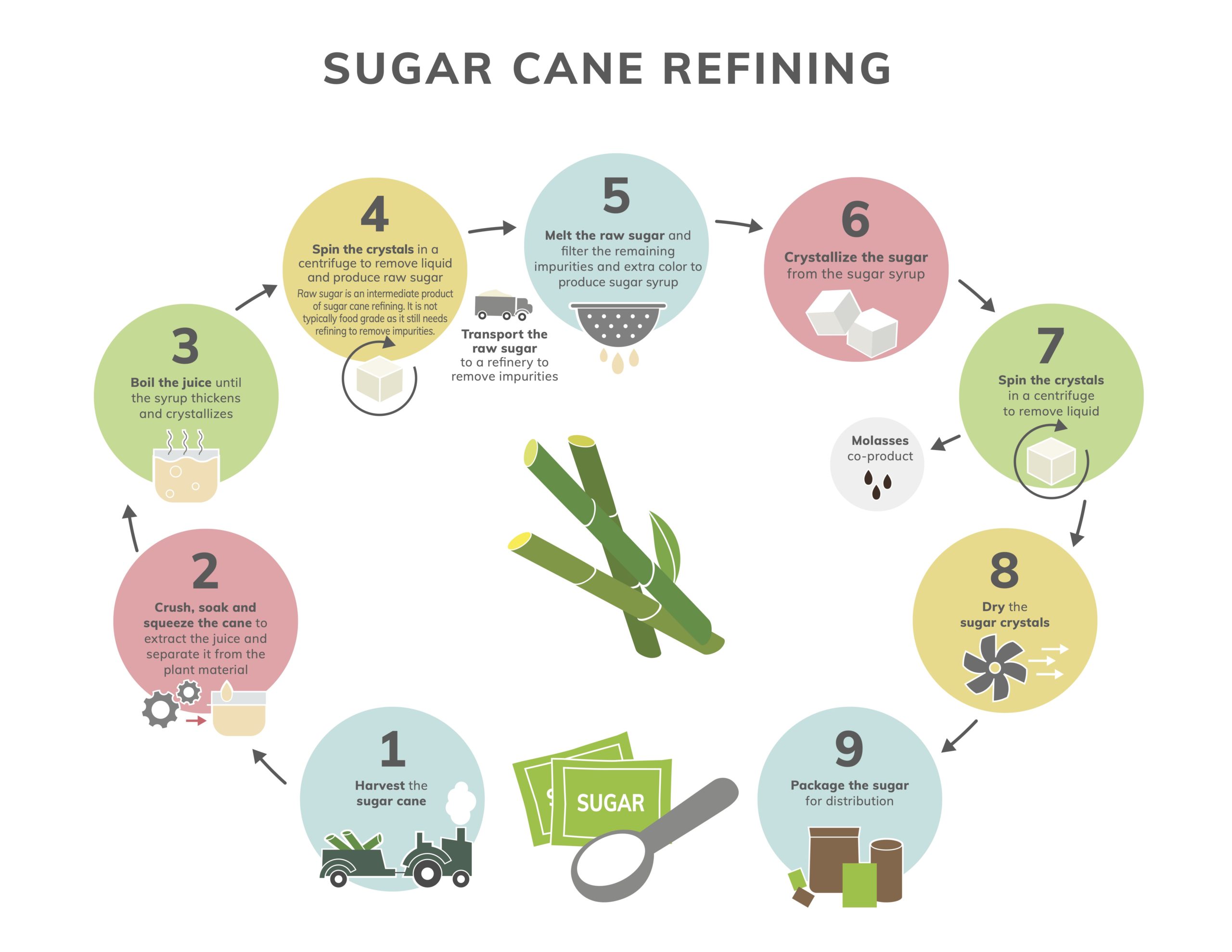Maximizar Rendimientos Y Minimizar Costos: Estrategias Avanzadas Para La Optimización Química Del Procesamiento De Azúcar De Caña
In the realm of cane sugar handling, the search of taking full advantage of yields while simultaneously decreasing prices stands as an awesome difficulty that needs a calculated blend of sophisticated chemical optimization methods. Amidst this complex web of techniques lies the promise of unlocking untapped possibility and changing the extremely essence of sugar production.
Chemical Evaluation for Efficiency
Chemical analysis plays a pivotal duty in boosting the effectiveness of sugar walking stick processing by giving important insights into the composition and residential properties of the raw materials. By conducting detailed chemical evaluations on sugar walking stick samples, cpus can figure out the precise concentrations of sucrose, sugar, fructose, and various other components existing in the raw material. This details is crucial for optimizing the numerous stages of the sugar walking stick handling chain, from crushing to condensation.
Furthermore, chemical analysis makes it possible for cpus to recognize impurities such as organic acids, proteins, and minerals that can affect the quality and return of the final sugar item. By quantifying these contaminations, processors can carry out targeted techniques to get rid of or reduce their results, ultimately boosting the overall effectiveness of the handling plant.
Furthermore, chemical evaluation helps with the monitoring of process criteria such as pH, temperature, and viscosity, enabling cpus to make real-time adjustments to make sure optimum conditions for sugar extraction and crystallization. In general, an extensive understanding of the chemical make-up of sugar cane is vital for taking full advantage of returns, minimizing costs, and preserving high item quality in the sugar production market.

Enzyme Utilization for Boosted Returns
With a tactical strategy to enzyme use, sugar cane processors can dramatically enhance their yields while keeping operational efficiency in the manufacturing procedure. Enzymes play an essential duty in sugar cane processing by damaging down intricate carbs into easier sugars, therefore raising the overall sugar extraction effectiveness. By incorporating certain enzymes customized to target the various components of sugar cane, such as cellulose and hemicellulose, processors can enhance the launch of sugars throughout removal.
Enzyme utilization uses the benefit of making the most of sugar yields from the raw material while decreasing the power and sources needed for handling. This causes a more sustainable and economical manufacturing process. Furthermore, enzymes can help in Web Site minimizing handling time and improving the general high quality of the sugar product. Via careful selection and application of enzymes, sugar cane processors can optimize their procedures to attain greater returns and productivity.
Ph Control for Optimal Processing
Enzyme application for enhanced yields in sugar walking stick handling lays the structure for dealing with the vital facet of pH control for optimum processing efficiency. Preserving the proper pH degree throughout numerous phases of sugar see it here walking cane handling is important for taking full advantage of returns and lessening prices. By meticulously monitoring and adjusting the pH levels at different processing steps, sugar cane processors can improve sugar healing rates, minimize chemical usage, and enhance the general production process.
Advanced Filtration Strategies
Applying sophisticated filtering methods in sugar walking stick processing enhances the performance and pureness of the end product through refined splitting up methods. By incorporating cutting-edge purification modern technologies, such as membrane layer filtering and activated carbon filtration, sugar walking stick processing plants can achieve greater degrees of sugar healing and enhanced quality control.

Activated carbon filtration is another innovative method that helps in the removal of colorants, off-flavors, and recurring pollutants from sugar cane items. By using activated carbon's adsorption homes, this filtration technique enhances the clearness and taste of the sugar, fulfilling the high requirements required by consumers and sector policies.
Energy-Efficient Purification Methods
Energy-efficient distillation methods are essential for maximizing the sugar walking stick processing sector's power consumption while keeping More Help top notch item requirements. Typical distillation processes can be energy-intensive, bring about higher production prices and environmental effects (Cane Sugar Processing Chemicals). Applying energy-efficient purification approaches, such as vacuum cleaner distillation or molecular purification, can significantly lower power requirements while enhancing total procedure effectiveness
Vacuum cleaner distillation includes reducing the stress within the purification system, which lowers the boiling point of the liquid blend being refined. This reduction in boiling point reduces the energy required for evaporation, causing power savings compared to conventional distillation approaches.
On the other hand, molecular distillation utilizes short path distillation techniques under high vacuum conditions to separate compounds based on their molecular weight. This technique is particularly efficient for heat-sensitive compounds, as it operates at lower temperatures, minimizing energy usage and protecting product high quality.
Final Thought
